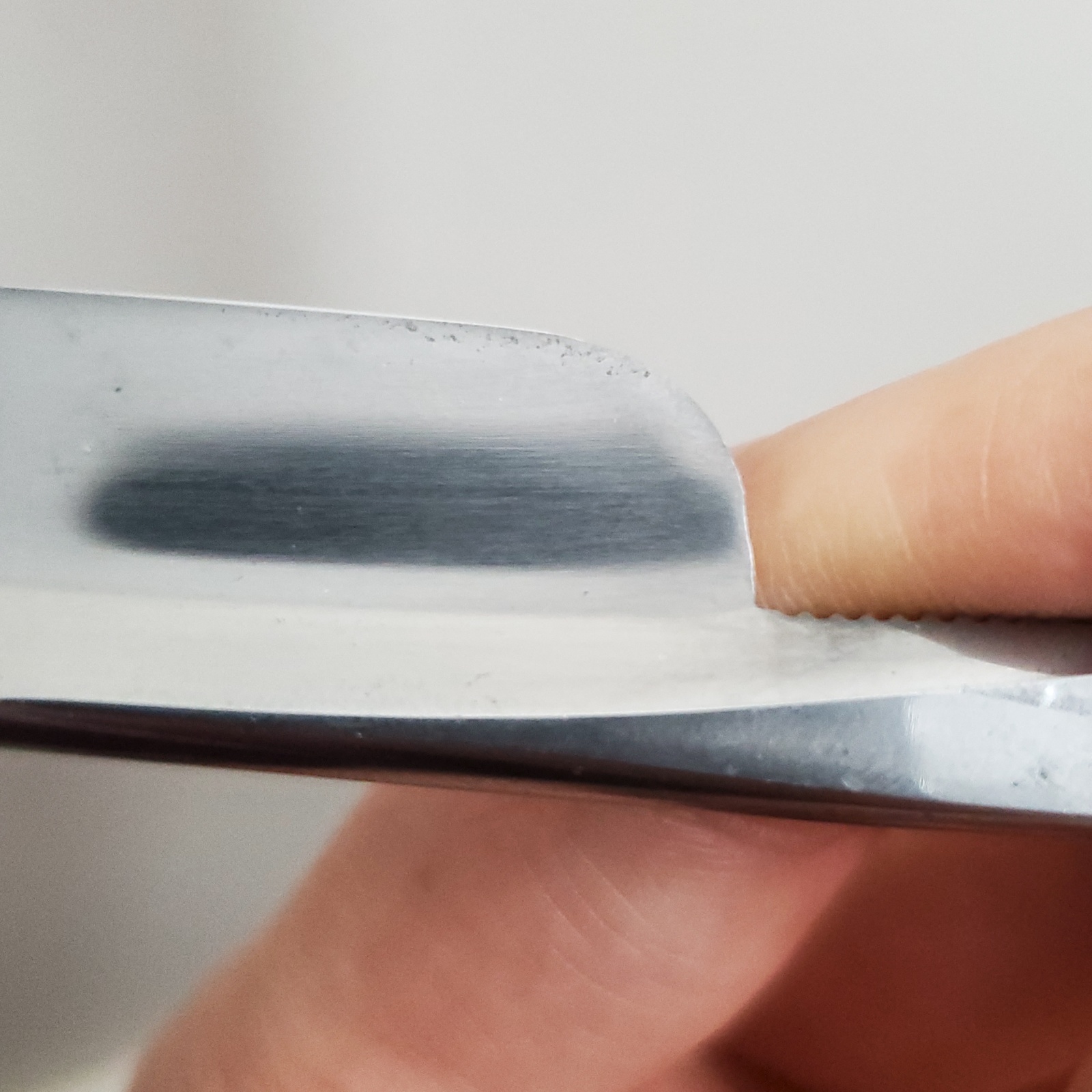So, typically, I try to hone through any pitting to get a clean edge. I might tolerate some on the bevel, but not right near the edge where the stresses of shaving and stropping might cause it to collapse and break that nice clean line.
However…
I have this one razor. I used it today. I quite like it: it has very little wear and was well ground so it has a very thin bevel. It shaves well and it holds an edge. Indeed, it’s one of the few edges I’ve put a dozen shaves on. But I have a confession: I left a tiny pit at the edge. Because there was probably going to be another and another and… well, usually I’d just take some metal off until we were in reasonable steel. I didn’t want to this time, so I left all this (which you can only see at all on one side):

…and while I had a mostly clean edge, it did have a small pit at the edge. But nothing major, it’s not a serrated knife or anything. So I went with it to see what happened. Every shave I made a point to see if the heel was giving me more irritation than elsewhere on the blade or anything like that and …nah. It’s fine.
Which reminded me of this post at Science of Sharp where you can see, based on the scale, how very much bigger a hair is than a razor edge. And I think my skin is at least as thick as a hair or I’d be bleeding way more often. A quick search confirms even the thinnest skin (eyelids apparently) has something like 50 microns of epidermis.
So maybe I shouldn’t be so surprised that I can’t notice a difference from some tiny pit on the edge? Maybe I should more often err on the side of leaving steel on a nice blade even if it’s not so great?

Yes. I do the tap and wobble business to check overall razor geometry. If it is close, then my first strategy is to see if I can get even material removal from the bevel by rolling pressure through the edge. If this proves ineffective, then I’m left with spine work. But, if the edge is damaged to begin with, and material needs to be removed prior to sharpening, then rolling pressure might not be an option as there’s just less bevel to manipulate.
Yes. Exactly. My understanding is that the goal is to have spine wear closely match bevel wear so that the overall sharpening angle is maintained for a long time. It’s a very imperfect world with older razors. Often to get proper bevel geometry adjusting the spine results in more wear in some areas than others.